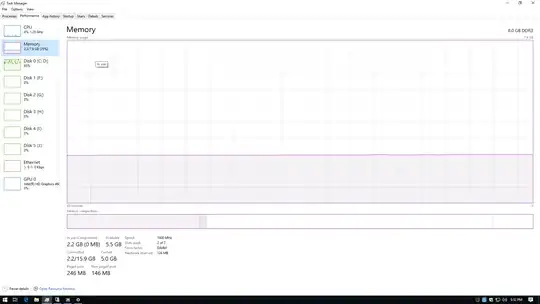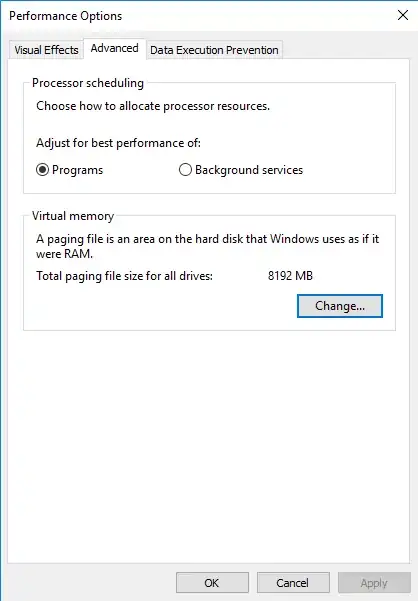You do not have 16 GB of committed memory. Your task manager screen snap shows that you have 2.2 GB of committed memory, aka "commit charge", with a commit limit of 16 GB.
Committed memory is virtual address space, specifically process-private virtual address space, and it is pageable. So n GB of commit charge is not necessarily using n GB of RAM. And on the other hand, there are other uses of RAM besides committed memory.
See the numbers on your first Task Manager screen snapshot under "Committed"? The first shows how much is currently committed (the "commit charge") and the second shows the commit limit. (Running into the commit limit brings you the "Windows is low on memory" pop-up.)
The graph on the memory page shows physical (RAM) memory usage and it shows only 30% of RAM in use. So disabling your page file will not address your performance problems.
Committed memory is created when processes allocate it. You don't really have a problem with your commit charge, but for reference, I'll add: Each process's contribution to this is shown in TM's "Details" tab, "Commit size" column (which is not displayed by default; you'll likely have to add it). The paged and nonpaged pool also are part of the system-wide commit charge.
You mention that another view of Task Manager (which we can't see) seems to show that your disk 0 is busy a high percentage of the time. Try using the Disk tab in Resource Monitor to see what's accessing the disk so much.
btw, an often-overlooked cause of slow disk activity is disk errors, which result in retries. Check the event log for this.

